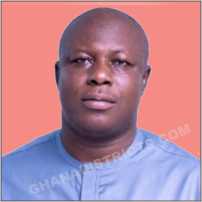

DISABILITY
Introduction
Persons with disability (PWD) have been defined as those who are unable to or are restricted in the performance of specific tasks/activities due to loss of function of some parts of the body as a result of impairment or malformation (Ghana Statistical Service, 2012).
Disability can limit an individual?s full participation in a number of activities in life. Estimates from the World Health Organization (WHO) has it that more than 600million PWDs in the world, of which approximately (80%) live in low-income countries (Ayiku, 2012). In Ghana, PWDs in general are marginalized and suffer from discrimination on account of their disability status. They are often seen as burden on society and their unfortunate circumstances are viewed sometimes as a curse or punishment.
Furthermore, they have poorer health status and lower educational achievements. In Ghana, the 1992 Constitution provide for the guarantee of the fundamental human rights of all persons including PWDs, but with this, PWDs continue to experience various hindrances that prevent their full participation in society. Currently activities concerning PWDs are allocated (3%) share of the District Assembly Common Fund. This has brought some relief especially those not in the formal sector of employment. This chapter discusses Population with disability, type of disability, disability by type of locality, disability and activity and disability, education and literacy.
Population with Disability by type of locality
Table 6.1 shows population by disability status and sex. The 2010 population and housing census (PHC) indicates that out of a total of 46,040 people in the District 44,524 (96.7%) are without disability and 1,516 (3.3%) are with disability. Out of a male population of 22,295 in the district 21,559 (96.7%) are without disability, and 736 (3.3%) are with disability. On the part of a female population of 23,745 in the district 22,965 (96.7%) are without disability and 780 (3.3%) are with disability. In terms of percentages by sex, males and females, the district equal disability status representing 3.3% of the population of that of males and females.
The total urban population in the district is 6, 898, out of which 6,774 (98.2%) are without disability and 124 (1.8%) are with disability. The male population in the urban localities is 3,266 of that population 3,207 (98.2%) are without disability while 59 (1.8%) are with. With a female population of 3,632, the number of the population with no disability is 3,567 (98.2%), and that with disability is 65 (1.8%).
The rural localities has a population of 39,142 of which 37,750 (96.4%) are without disability while 1,392 (3.6%) are with disability. With a male population of 19,029 in the rural localities, 18,352 (96.4%) are with no disability. Those with disability are 677 (3.6%).
On the part of the female, out of a population of 20, 113, the population with no disability is 19,398 (96.4%) and that with disability is 715 (3.6%).
Types of Disability
Figure 6.1 describes the proportional distribution of the number of times a specific disability is reported by individuals in the district. The Table shows that Sight impairment is the main type of disability from which most of the disabled suffer accounting for 49.9 percent in the District. Also, 25.3 percent of PWDs suffer from hearing impairment while 22.0 suffer from physical disability. Speech impairment ranks fourth accounting for 12.0 percent followed by Emotional disability (11.1%) in the Nandom District. The least impairment is the other form of disability which cannot be classified under any form of disability or has not been well identified and this forms about seven percent (7.3%).
Disability and Economic Activity
The 2010 population and Housing Census collected data on persons age 15 years and older with disability by economic activity status who are economically active or economically not active.
It also collected data on the various types of disability by sex, male and female. The economically active include employed and unemployed.
Table 6.2 shows that the district has 28,868 persons age 15 years and older with disability by economic activity status who are economically active or economically not active. Out of this, 65.7 percent are employed, 1.8 percent are unemployed and 32.5 percent are economically not active.
From the 28,868 persons age 15 years and older with disability by economic activity status, 27,595 (95.6%) has no disability and 1,273 (4.4%) are with disability. Furthermore, 18,341 (66.5%) of the employed are without or has no disability and 625 (49.1%) has disabilities. The unemployed with no disabilities is 500(1.8%) and that with disability is 19 (1.5%). Finally those who are economically not active and are without disability is 8,754 (31.7%), while those with disabilities are 629 (49.4%).
Out of the various types of disabilities, sight is the highest disability in the district with 661 (51.9%). Those with sight disability who are employed is 330 (49.9%), the unemployed is 15 (2.3%) and those who are economically not active is 316 (47.8%).
Hearing which is the second largest among the disability types, constitute 320 (25.1%). Those with hearing disability who are employed is 148 (46.3%), the unemployed is 4 (1.3%), and the economically not active with hearing disorders is 168 (52.5%).
The trend of persons with disability and without disability who are employed, unemployed and economically not active among both male and female looks similar to that discussed above.
Disability, Education and Literacy
Education is normally used to determine the wealth of a nation. A country with few numbers of educated persons lack development. Persons with Disability are those unable to or are restricted in the performance of specific tasks/activities due to loss of some part of the body as a result of impairment of malformation (Ghana Statistical Service, 2012).
From Table 6.3, more than two thirds of the population with disability (PWDs) aged three years and older have never attended school. of 1,486, three (3) years and older, (987) representing 66.4 percent have never attended school before, 246 PWDs representing 16.6 percent have attained basic education while (102) which is 6.9 percent have attained higher education from the SHS level to the tertiary level. Only (4), 0.3 percent PWD has attained Bachelor degree.
Males PWDs who have not attended school constitute 29.5 percent and females who have not attended school account for 37.0 percent. There are (140) male PWDs representing 9.4 percent who have attained basic education and 106 females PWDs (7.1%) who have also 48 attained basic education. Males PWDs who have attended JHS to a higher education constitute 138 (9.3%) as compared to their female counterparts of 97 (6.5%).
Date Created : 4/11/2018 6:42:23 AM









 facebook
facebook
 twitter
twitter
 Youtube
Youtube
 +233 593 831 280
+233 593 831 280 0800 430 430
0800 430 430 GPS: GE-231-4383
GPS: GE-231-4383 info@ghanadistricts.com
info@ghanadistricts.com Box GP1044, Accra, Ghana
Box GP1044, Accra, Ghana